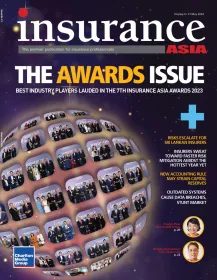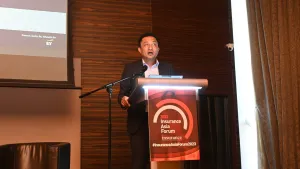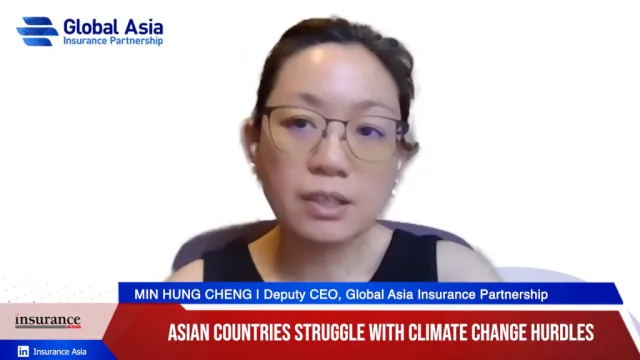How Asia's insurers can profit from the disruption wave
By Arthur Bi and Winston YungAsian insurers are riding several positive trends, like the region’s growing middle class and their increasing demand for insurance. Over the past five years, Asian consumers contributed more than half of the global growth in life insurance premiums. Capital markets have certainly noticed: Insurance players with a significant Asian presence have an average price-to-earnings (P/E) ratio close to 20—compared to a P/E of 10 to 15 for those that don’t, according to Bloomberg. But insurance companies also face challenges. Government bond rates have fallen from more than 10% in the 1980s to 2% or less in many Asian countries, shrinking investment returns.
Competition has also intensified as more markets liberalize and open up to digital attackers and foreign competitors. A case in point is India, where international insurers, such as Swiss Re, SCOR SE, Hannover Re and Munich Re, have started to operate. The performance of individual companies illustrates these scenarios. There is a significant spread between best and worst performers. In mature markets like Japan, adjusted annual growth in surplus ranges from minus 12-16%.
The spread is even bigger in developing markets like China, India, and Indonesia; the best players chalk up free surplus growth of more than 40% while the worst ones record negative annual free surplus growth of more than 100%. What will it take to prosper in this environment? Asian insurers will need to satisfy customer expectations for innovative insurance products and digitally-enabled services. Here are three priorities they should focus on:
1. Redesign the customer journey.
New technologies are reshaping the relationship with consumers, who are both increasingly comfortable with buying online, and also increasingly demanding. Three-quarters of Asian consumers have used apps to shop, and a similar percentage expects help within five minutes. For insurance companies, digital offerings have become the table stake—the price of being in the game at all. Companies need to combine high-tech with high-touch to create the simplest, fastest, and most useful online-offline customer experience.
Insurers should design this experience to reflect the entire journey their customers go through as they engage with them. From the day a customer meets with an agent, to the physical check-up, all the way through to the first time he makes a premium payment, insurers need to make sure this journey is seamless.
Doing so will require rethinking all of the underlying processes along the journey, and taking a fresh approach to each. Technology has come a long way, and insurers have a suite of powerful options they can select from as they redesign the way they sell and deliver insurance products to their customers.
2. Embrace the digital revolution.
In Asia, the digital revolution is well underway. Of the top 20 digital companies in the world, 10 are in Asia, according to McKinsey research. And digital technologies are reshaping how insurance is sold and delivered in the region. In China, for example, Gross Written Premiums generated through digital channels have grown by 200% in just the past few years.
The use of digital technologies is expected to help insurers remove significant cost across the value chain and achieve higher customer satisfaction. Today, however, most carriers spend too much time and resources on assessing their vulnerability rather than identifying opportunities and investing in the technologies that will help them get ahead of the coming wave of disruption. Asian insurers will need to pursue bold strategies and embrace entirely new business models.
3. Focus on value.
Asia continues to be a huge growth opportunity. An aging population, coupled with the relatively low penetration of insurance products among them, translate into enormous upside for the region’s insurers. In China and India alone, Swiss Re estimates that there will be a gap of $116 billion in health insurance protection. And in a recent survey, 59% of Asian insurance customers said the most important reason for buying insurance was protection, compared to 24% who answered “investment”.
As markets mature, and if interest rates remain low, Asia’s insurers will need to start creating more value from the liability side of their balance sheet by increasing underwriting profit. Launching innovative products that cover new types of risk, such as long-term care; creating new, analytics-driven approaches to underwriting; improving claims management; and automating back-office operations, are several ways insurers can boost underwriting profits.
Market and social trends are creating unique opportunities for Asia’s insurers. Consumers’ growing need to protect themselves and their families, along with their rapid adoption of digital channels, are creating enormous opportunities for Asia’s insurers.












 Advertise
Advertise












